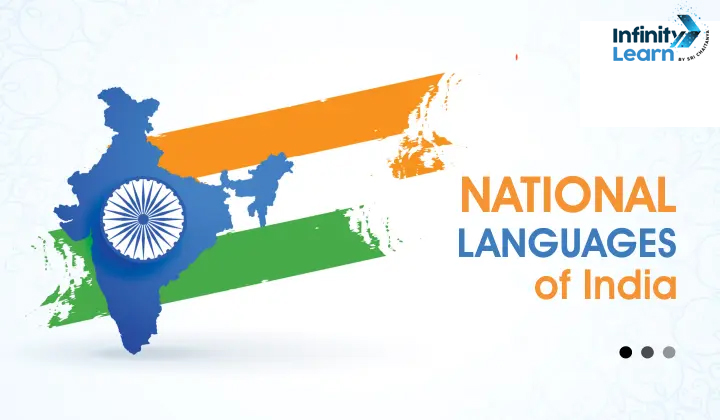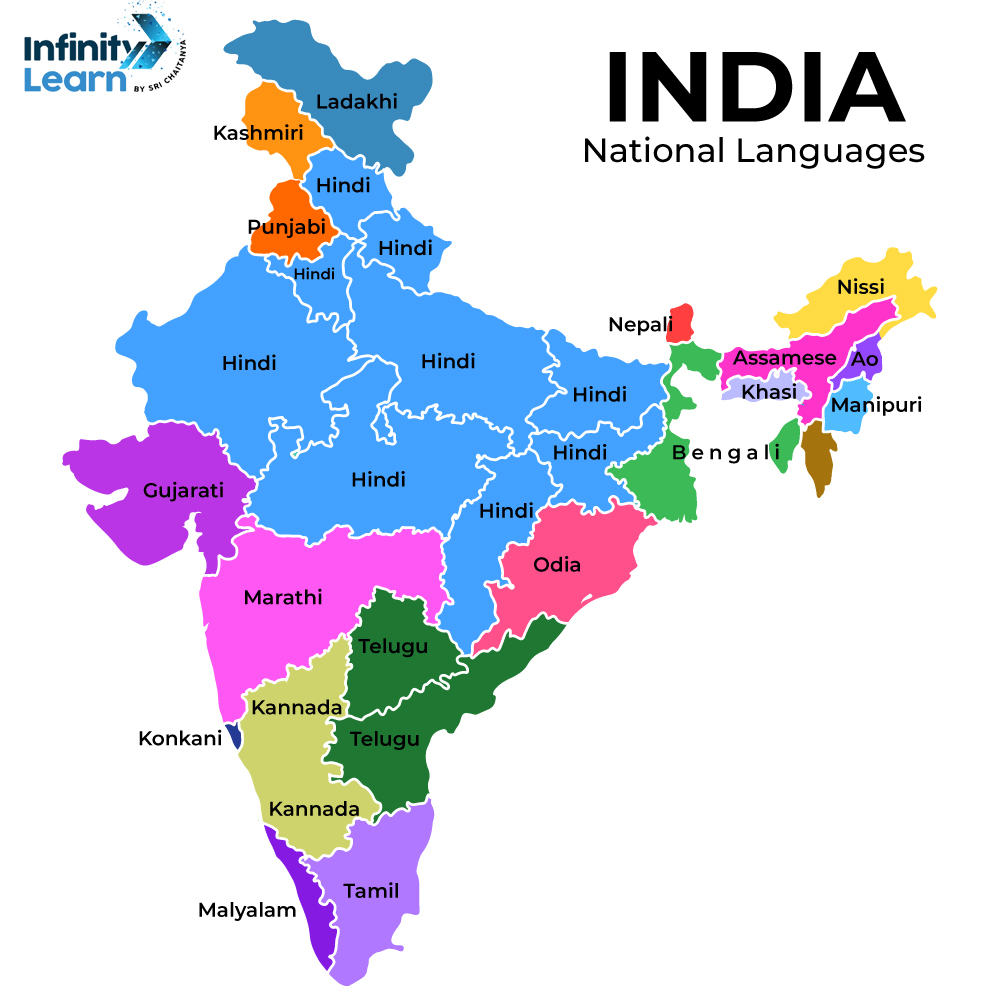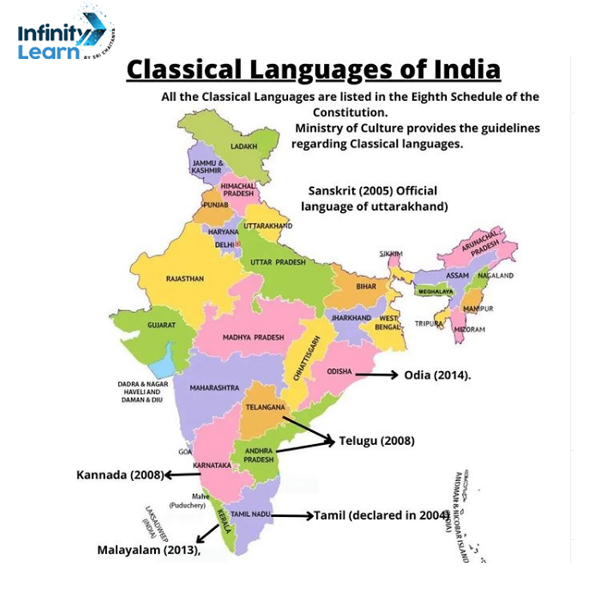Table of Contents
Language is one of the most beautiful and intriguing phenomenon in the world. It is closest to all living beings, carving the rhythm of their life. It is language that fulfils our wish to be understood by others in life time and remembered ever after. In India, we don’t have just one “national language.” Instead, we have Hindi as the “official language of the Union.” But guess what? We celebrate a bunch of other languages too! Over 20 languages, like Bengali, Telugu, Marathi, and more, are super important in different states. Each language brings its own special culture and is a big part of what makes India so colorful and diverse. So, while Hindi is the official language for the whole country, India loves and respects lots of different languages that make our country unique. In Sanskrit the word for ‘Language’ is Bhāṣā, which is derived from the root Bhāṣ, which literally means ‘to speak’, ‘to say’. Language is an integral part of the social and cultural lives of human beings.
India is home to five major language families. These language families are: Indo-Aryan, Dravidian, Austro-Asiatic, Tibeto-Burmese and Semito-Hamitic. India’s rich linguistic and cultural heritage is mirrored in her literatures, both oral and written. Sanskrit belongs to Indo-European group of languages
The wide topographical range harbours a variety of environmental conditions which influence the language and Indian culture of people living in different regions. Thus, India houses the maximum number of written and orally alive languages in the world. The diversity of languages, cultures and traditions makes India one of the most tolerant and harmonious country. India has always been a knowledge super-power, producing both knowledge that has universal relevance as well as knowledge that needs to be differentiated by cultural specificity that makes it useful for Indian society.

22 Official Languages of India
There are numerous languages spoken in India, which are influenced by various regions, religions, climates, and migrations. The Constitution of India recognizes 22 languages, which are officially recognized and used for administrative and educational purposes. However, there are over 1600 languages spoken in India, out of which a few are endangered due to lack of usage and support. The most widely spoken language in India is Hindi, which is the official language and the second-most commonly spoken language after English. Having recognized the importance of English as an instrument of knowledge- dissemination as well as commerce as well as maintenance of international relations, a provision was left to extend the use of English language
Some other prominent languages include Bengali, Telugu, Marathi, Tamil, Gujarati, Punjabi, Urdu, Kannada, Odiya, and Malayalam.

| No. | Official Language | Recognition in States |
|---|---|---|
| 1 | Assamese | Assam |
| 2 | Bengali | West Bengal, Tripura |
| 3 | Bodo | Assam |
| 4 | Dogri | Jammu and Kashmir |
| 5 | Gujarati | Gujarat, Dadra and Nagar Haveli, Daman and Diu |
| 6 | Hindi | Bihar, Chhattisgarh, Haryana, Himachal Pradesh, Jharkhand, Madhya Pradesh, Rajasthan, Uttar Pradesh, Uttarakhand, Delhi |
| 7 | Kannada | Karnataka |
| 8 | Kashmiri | Jammu and Kashmir |
| 9 | Konkani | Goa, Dadra and Nagar Haveli, Daman and Diu |
| 10 | Maithili | Bihar |
| 11 | Malayalam | Kerala |
| 12 | Manipuri (also Meitei or Meithei) | Manipur |
| 13 | Marathi | Maharashtra, Dadra and Nagar Haveli, Daman and Diu |
| 14 | Nepali | Sikkim, West Bengal |
| 15 | Odia (Oriya) | Odisha |
| 16 | Punjabi | Punjab |
| 17 | Sanskrit | – (Classical language status) |
| 18 | Santali | Jharkhand, Odisha, West Bengal |
| 19 | Sindhi | Gujarat, Rajasthan |
| 20 | Tamil | Tamil Nadu, Puducherry |
| 21 | Telugu | Andhra Pradesh, Telangana |
| 22 | Urdu | Jammu and Kashmir, Telangana, Uttar Pradesh, Bihar, Delhi, Jharkhand, West Bengal |
The Diversity of National Languages of India
India is a country of diverse cultures and traditions. Language is closely tied to individual and collective identity. It reflects the Indian heritage and history of communities, fostering a sense of belonging and continuity across generations. Each language has its own script, grammar, vocabulary, and pronunciation.
Languages represent a multitude of people and their lived experiences. Our country is very rich in linguistic diversity. This diversity is an outcome of many factors that shape life on the subcontinent. Its territorial space is marked by mountains, river basins, coastlines, dense forests and deserts.
For instance, Tamil is known for its classical literature, Carnatic music, dance, and architecture, while Kannada has rich folklore, theatre, and cinema. Similarly, Bengali is famous for its literature, poetry, and art, while Punjabi is known for its music, dance, and cuisine.
As of today, the Indian constitution recognizes 22 major national language of India in what is known as “the 8th Schedule” of the Constitution. They also happen to be the major literary languages in India, with a considerable volume of writing in them. They include, besides Sanskrit, the following 21 modern Indian languages: Assamese, Bangla, Bodo, Dogri, Gujarati, Hindi, Kashmiri, Kannada, Konkani, Maithili, Malayalam, Manipuri, Marathi, Nepali, Oriya, Punjabi, Tamil, Telugu, Santali, Sindhi, and Urdu.
The diversity of languages has been a boon and a challenge for Indian society. On one hand, it has enriched the cultural landscape of India, and also provided a means for communication and expression for different communities. On the other hand, it has also created linguistic barriers and conflicts, especially in the realm of politics and governance. The demand for regional autonomy, reservation, and recognition of minority languages is a testimony to the power of language in shaping identity and power.
Several languages in India are getting endangered due to factors like a declining number of speakers, lack of written literature, and minimal use in education and administration.
In conclusion, languages are an integral part of Indian society and play a vital role in defining and expressing the diverse cultures and traditions of India. The richness and diversity of languages are a source of pride and inspiration for the Indian people, and also a challenge for the government and the society to ensure equity, inclusion, and participation for all linguistic communities.
National Language of India – Its Uses
The languages of India serve a multitude of purposes, reflecting their diverse roles in various aspects of daily life, communication, and cultural expression. Here are some key uses of National Language of India
Communication: The primary purpose of any language is communication. In India, languages facilitate communication between people coming from different families, communities, and across regions, fostering understanding and social cohesion.
Education: Languages are very crucial in the education system. They serve as mediums of instruction, allowing students to learn various subjects in their mother tongue or a language of their choice. They help in exchanging information and ideas . Bilingual and multilingual education is common.
Administration and Governance: Official languages play a vital role in administrative processes, governance, and legal documentation. Different states have their official languages for communication and documentation purposes.
Language plays an important factor in Indian politics. Language-based movements and considerations play a role in statehood demands, official language policies, and electoral dynamics.
Classical Languages of India

India has several languages that are considered classical languages due to their rich history and literature. A language is accepted as a classical language, if it has an independent tradition, antiquity and rich repertoire of classical literature. A classical language should be ancient and it should have its own independent tradition, not influenced by any other tradition. It must have a large and extremely rich body of ancient literature.
Some criteria for a classical language include the high antiquity of early textual history of over 1500 to 2000 years. It should be a body of ancient literature that is considered a valuable heritage by generations of speakers. The literature tradition should be original and not borrowed from another speech community.
The Government of india accorded classical status to some languages in India based on their antiquity and their tradition in years mentioned in brackets: Tamil (2004) , Sanskrit (2005), Telugu (2008) , Kannada (2008), Malayalam (2013), Odiya (2014).
The following languages are officially recognized as Classical Languages of India:
1. Tamil: Tamil is one of the oldest classical languages and has a history that dates back to the 3rd century BCE. It has a rich literary tradition that includes Sangam literature and is widely spoken in the southern Indian state of Tamil Nadu.
2. Sanskrit: Sanskrit is a classical language of India that has been in use for more than 4000 years. It is considered the mother of many modern Indian languages and is widely regarded as the language of the ancient Indian scriptures. It is used for academic and religious purposes.
3. Kannada: Kannada is a classical language spoken in the southern Indian state of Karnataka. It has a rich literary tradition that dates back to the 9th century CE and includes works like the Kavirajamarga and Vaddaradhane.
4. Telugu: Telugu is a classical language spoken in the southern Indian states of Andhra Pradesh and Telangana. It has a rich literary history that dates back to the 11th century CE and includes works like the Annamayya Keerthanas and the Telugu Mahabharata.
5. Malayalam: Malayalam is a classical language spoken in the southern Indian state of Kerala. It has a rich literary history that includes works like the Ramacharitam and the Thunjathu Ezhuthu.
These classical languages have contributed significantly to Indian literature, philosophy, religion, art, and science. They are still actively used and studied across India and the world and are a source of pride and inspiration for the Indian people.
Also Read Related Articles
Highlights : National Language of India
● Hindi is the most widely spoken language in India and is considered as the official language of India. Hindi is spoken as a first language by a significant portion of the population. Hindi is written in the Devanagari script.
● Sanskrit is one of the oldest languages in India and was used for various academic and philosophical purposes and is regarded as the mother of many modern Indian languages.
● Due to the country’s diverse history, geography, and cultures, India has many languages. However, India has no national language. The country has over 1600 languages, including regional and tribal languages.
● Languages serve as an important tool for news, entertainment, storytelling, and cultural representation.
● Linguistic differences sometimes create barriers and conflicts. The demand for regional autonomy, reservation, and recognition of minority languages is a demonstration of the power of language in shaping identity and political power.
● Several states in India have their own official languages recognized for official purposes. For example, Tamil is recognized in Tamil Nadu, Telugu in Andhra Pradesh, and so on.
● Diversity of languages in India, challenges the government and society to ensure equity, inclusion, and participation for all linguistic communities to avoid linguistic conflicts.
● Multilingualism is common in India. Many individuals grow up speaking more than one language, given the linguistic diversity in the country.
● The language policy of India aims to promote and preserve the diverse regional languages of the country, while also ensuring that Hindi and English are used for official purposes. The policy recognizes the importance of multilingualism and encourages people to learn more than one language.
● In 1913, Bengali poet Rabindranath Tagore became India’s first Nobel laureate in literature.
National Language of India – Frequently Asked Questions (FAQs)
How many languages are spoken in India?
India is a linguistically diverse country with several hundred languages. The Eighth Schedule of the Constitution of India recognizes 22 official languages, including Hindi and English.
What are the 22 languages of India?
They include, besides Sanskrit, the following 21 modern Indian languages: Assamese, Bangla, Bodo, Dogri, Gujarati, Hindi, Kashmiri, Kannada, Konkani, Maithili, Malayalam, Manipuri, Marathi, Nepali, Oriya, Punjabi, Tamil, Telugu, Santali, Sindhi, and Urdu.
How are languages preserved and promoted in India?
Efforts to preserve and promote languages in India include language education, cultural programs, documentation of linguistic diversity, and government initiatives to support lesser-known languages.
Is Sanskrit still spoken in India?
While Sanskrit is not a commonly spoken language for daily communication, it is studied and used for religious, academic, and cultural purposes. It has a significant influence on many Indian languages.









